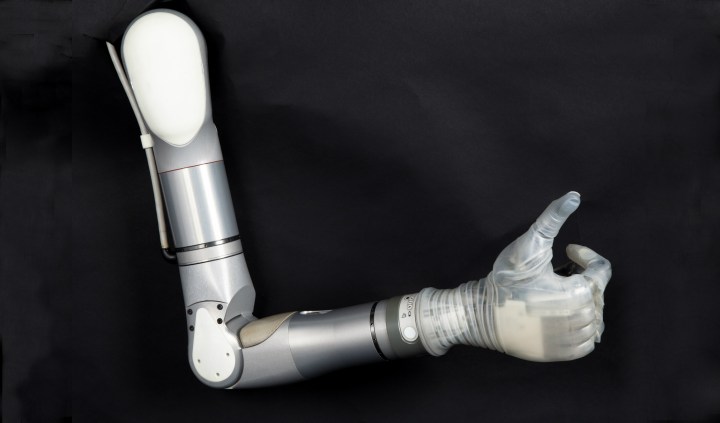
The arm has been in development for ten years, starting when the Defense Advanced Research Projects Agency (DARPA) looked for innovative approaches for a whole new generation of prosthetics for future amputees. Shortly thereafter, DEKA Research, a company run by Kamen, started drawing up designs for a totally new breed of prosthetic.
Since then, Kamen’s new arm has been tested by nearly 100 amputees and used for over 10,000 hours. When it received FDA approval, the agency said “The DEKA Arm System may allow some people to perform more complex tasks than they can with current prostheses, in a way that more closely resembles the natural motion of the arm.”
LUKE will come in different configurations to be compatible with people who have shoulder-level amputations, but its most impressive feature may be its ability to reach and scratch your back in a pickle. The arm is also strong enough to lift a bag of groceries from floor to tabletop, hold a glass of water anywhere from your waist to above your head, and even gives users a sense how firm they’re grasping something thanks to the built-in sensors. It’s all controlled from input devices like EMG electrodes and pressure switches, but it’s also possible to operate via wireless IMUs (Inertial Measurement Units) that are worn inside the wearer’s shoes. Mobius Bionics say that the clinical team and the client “work together to develop the input configuration that best meets the client’s needs.”
Interested parties are likely well aware that prosthetic replacements have seen significant improvements in terms of flexibility and practical uses, as their development has been pushed to help not only war veterans who’ve lost body parts in battle, but also those who’ve lost them to common accidents. In a world where such efforts are made, it’s apparent we’re moving away from the cumbersome and impractical solutions of the past. Sensors can help us measure and actually feel the objects via prosthetic limbs, and the improved technology allows for much more flexible limbs than before


